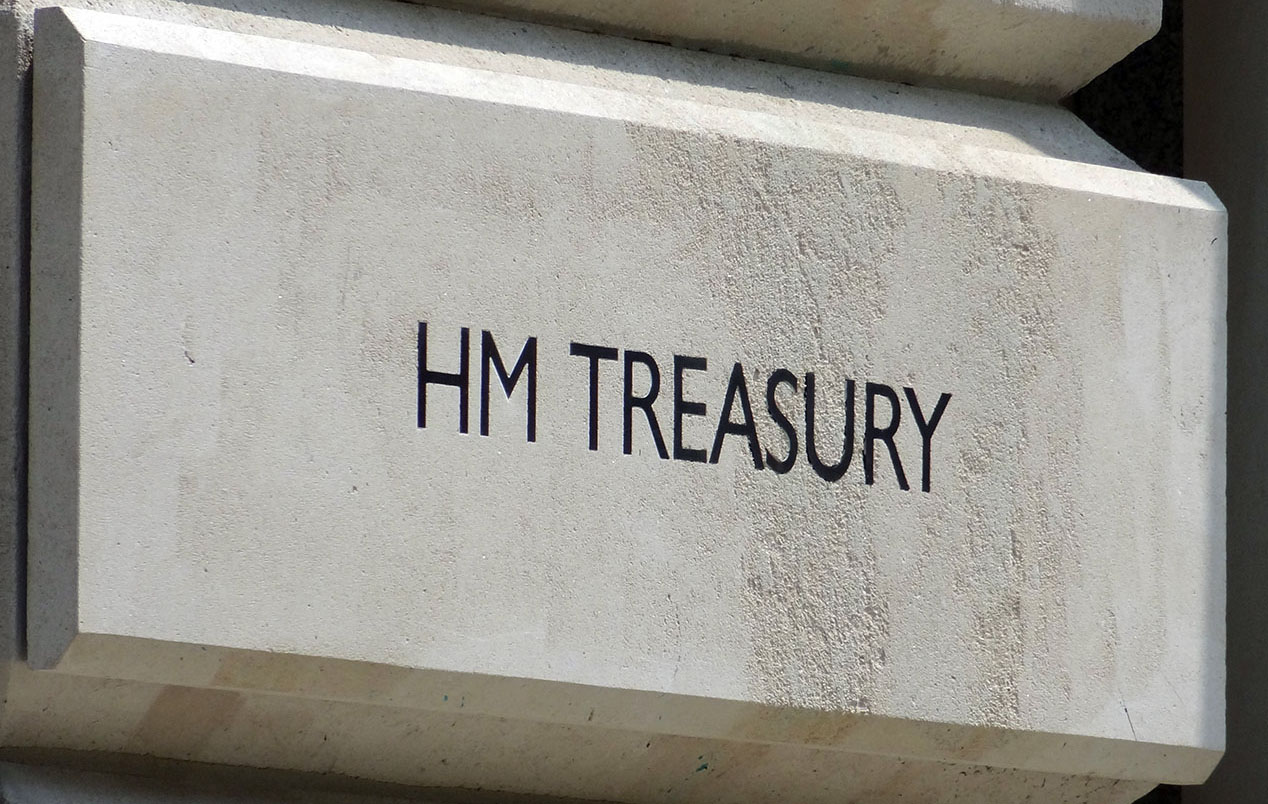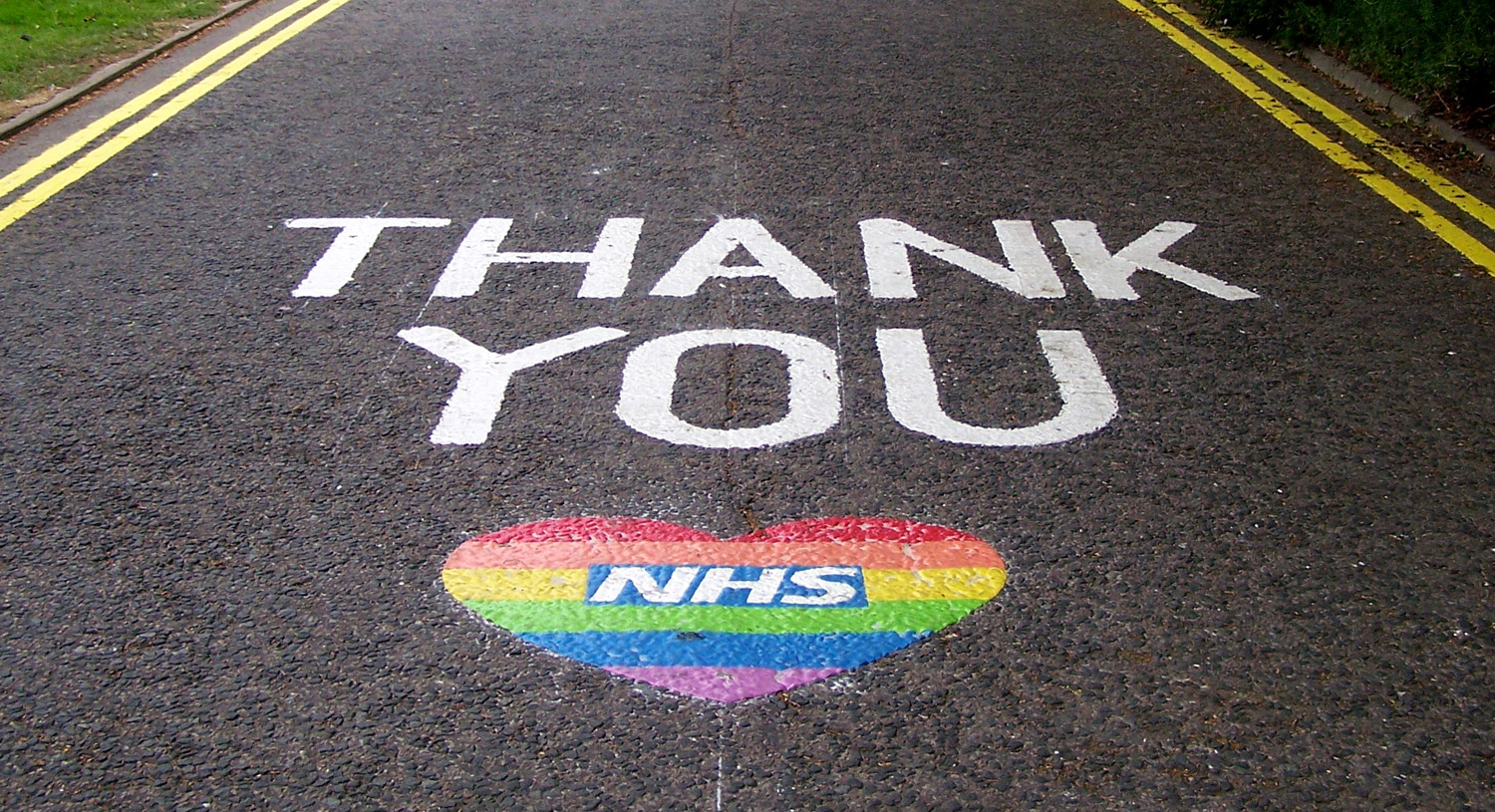 Competition authorities across the globe have recently been paying close attention to the activity of large firms in high-tech markets, in particular Google, Amazon, Facebook and Apple. One estimate suggests that 30 cases have been opened by the authorities since 2010, and a third of these were launched in 2020.
Competition authorities across the globe have recently been paying close attention to the activity of large firms in high-tech markets, in particular Google, Amazon, Facebook and Apple. One estimate suggests that 30 cases have been opened by the authorities since 2010, and a third of these were launched in 2020.
One of the most prominent recent cases in the US courts concerns a complaint made by Epic Games, producer of the popular Fortnite game, against Apple. The background to the case is Apple’s standard practice on its App Store of taking a 30% cut of all paid app and in-app purchases. Therefore, a Fortnite player purchasing $10 worth of in-game currency would result in $7 for Epic and $3 for Apple.
However, in August 2020 Epic decided, contrary to Apple’s terms and conditions, to offer players an alternative way to purchase in-game currency. Gamers would see a choice screen giving them the option to buy currency through the Apple App Store or to buy it directly from Epic. Crucially, purchasing directly from Epic would be cheaper. For example, the same $10 worth of in-game currency on the App Store would cost only $8 if purchased directly from Epic.
It is clear to see why Epic was in favour of direct payments – it earns revenue of $8 instead of $7. However, note that the benefits for gamers are even larger – they save $2 by buying directly. In other words, Epic is passing on 2/3 of the cost saving to consumers.
Apple very quickly responded to Epic’s introduction of the direct purchase alternative by removing Fortnite from the App Store. Epic then filed a complaint with the US District Court.
The Epic v Apple court case
The case concerned Apple restricting game developers’ ability to promote purchasing mechanisms outside the App Store. However, more broadly, it also examined Apple’s complete control of the iOS app market since all apps must be distributed through the Apple App Store. Epic had previously disrupted PC games distribution by launching its own platform with lower fees. The setup of iOS and Apple’s actions against Epic make this an impossible way to reach users.
 The Court’s analysis of the Epic v Apple case depended upon several key factors. First, the market definition. To be found to have breached competition law Apple must have a significant share of the market. If the market is defined as that for iOS apps, this is clearly the case. However, if, as Apple argues, it is broader, encompassing the options to play Epic games through web browsers, gaming consoles and PCs, then this is not the case.
The Court’s analysis of the Epic v Apple case depended upon several key factors. First, the market definition. To be found to have breached competition law Apple must have a significant share of the market. If the market is defined as that for iOS apps, this is clearly the case. However, if, as Apple argues, it is broader, encompassing the options to play Epic games through web browsers, gaming consoles and PCs, then this is not the case.
Second, even if the market is narrowly defined, Apple argues that its control of the app distribution market is essential to provide user friendly and secure provision of apps. Furthermore, revenue extracted from app producers can enable more investment in the iOS. Without Apple controlling the market, app producers would be able to free-ride on the visibility the App Store provides for their apps.
The ruling
The US Court announced its ruling on 10 September 2021. The judge decided that the market was broader than just iOS and thus Apple is not considered to be a monopolist. This has been touted as a major success for Apple, as it will allow the company to maintain its control of the app distribution market. However, the Court also ruled that Apple must allow game developers to link and direct users to alternative purchasing methods outside the App Store.
The Court’s decision in the Epic v Apple case closely follows concessions recently made by Apple for so called ‘reader apps’ such as Spotify and Netflix. Following an investigation by the Japanese authorities, these concessions allowed such apps to promote and receive purchases directly from consumers as long as they were made outside the app. These apps could be treated differently, as digital goods are consumed on multiple devices. However, the decision in the Epic case now extends such concessions to gaming apps.
It is unclear whether Apple will appeal the decision in the case Epic brought. If not, Apple stands to lose considerable revenue from its 30% share of in-app purchases. It will be very interesting to see how this ruling affects how Apple runs the App Store. Epic, on the other hand, has already made clear it will appeal the decision, aiming to prevent Apple gaining a share of any payment users make outside the app.
Matt Olczak and Jon Guest
Articles
Questions
- Why might a firm involved in a competition case, such as Apple, try to convince the authorities to define the relevant market as broadly as possible?
- Using the example of the Epic v Apple case, explain how Apple’s actions could be seen as both exclusionary and exploitative abuses of a dominant position.
 For many goods and services, economists argue that relatively unregulated markets often do a pretty good job in delivering desirable outcomes from society’s view point.
For many goods and services, economists argue that relatively unregulated markets often do a pretty good job in delivering desirable outcomes from society’s view point.
However, for these desirable outcomes to occur, certain conditions need to be present. One of these is that all the benefits and costs of consuming and producing the good/service must be experienced/incurred by the buyers and sellers directly involved in the transaction: i.e. there are no externalities. The market can still work effectively if people outside of the transaction are affected (i.e. third parties) but the impact occurs through the price mechanism.
The fast fashion industry
Fast fashion refers to designs and trends that rapidly pass from catwalks and designers to retailers. The clothes sell for low prices and in high quantities. The business model relies on regular purchases and impulse buying. It is particularly popular in the UK where annual clothing consumption per capita is significantly greater than in other European countries – 26.7kg vs 16.7kg in Germany and 14.5kg in Italy. On average, people in the UK have 115 items of clothing. Unsurprisingly, 30 per cent of these garments have not been worn for at least 12 months.
Externalities in fast fashion
There is lots of evidence that the fast fashion market fails to meet the condition of no externalities. Instead, it generates lots of external costs across its whole supply chain that do not affect third parties through the price mechanism. For example:

- Growing cotton requires large amounts of water. Some estimates suggest that on average it takes 10 000 litres of water to cultivate just one kilogram of cotton. As water is a common resource (rival and non-excludable), its use in cotton production can exceed socially desirable levels. This can have serious consequences for both the quantity of drinking and ground water and can lead to previously fertile land being transformed into arid regions that are too dry to support vegetation.
- Growing cotton also uses large amounts of pesticide. Some estimates suggest that 6 per cent of global pesticide production is applied to cotton crops. Extended contact with these chemicals can cause illness and infertility. It also has a negative impact on the long-term productivity of the soil. For example, the chemicals destroy microorganisms, plants and insects and so decrease biodiversity.
- The manufacture of synthetic fibres such as polyester has a smaller negative impact on the use of water and land than the cultivation of a natural fibre such as cotton. However, because it is derived from oil, its manufacture generates more CO2 emissions. One study compared the CO2 emissions from producing the same shirt using polyester and cotton. The former generated 5.5kg whereas the latter produced 2.1kg.
- The waste water from the use of solvents, bleaches and synthetic dyes in the manufacture of textiles/garments often flows untreated into local rivers and water systems. This is especially the case in developing countries. Estimates suggest that this is responsible for between 17 and 20 per cent of industrial global water pollution.
- There are excessive levels of textile waste. This can be split into producer waste and consumer waste. Producer waste consists of 10–15 per cent of the fabric used in the manufacture of garments that ends up on the cutting room floor. It also includes deadstock – unsold and returned garments. For example, Burberry admitted that in 2017 it incinerated £28.6 million of unsold stock. In the same year, UK consumers disposed of 530 000 tonnes of unwanted clothing, shoes, bags and belts. This all went for landfill and incineration.
- Textiles are one of the major sources of microplastic pollution and contribute 35 per cent (190 000 tonnes) of microplastic pollution in the oceans. A 6kg domestic wash can release as many as 700 000 synthetic fibres.
Addressing the externalities
The House of Commons Environmental Audit Committee published a report on the fashion industry in February 2019. One of its key recommendations was that the tax system should be reformed so that it rewards fashion companies that design products with lower environmental impacts.
The UK government has tended to focus on the use of plastic rather than textiles. For example, it introduced a charge for single use carrier bags as well as banning the use of microbeads in rinse-off personal products and plastic straws/stirrers.
In April 2022, a new tax is being introduced in the UK on the plastic packaging of finished goods that is either manufactured in the UK or imported from abroad. The rate, set at £200 per metric tonne, will apply to packaging that contains less than 30 per cent of recycled plastic.
 One specific proposal made by the Environmental Audit Committee was for the government to consider extending this new tax to textiles that contain less than 50 per cent recycled polyester. A recent study found that just under 50 per cent of clothes for sale on leading online websites were made entirely from new plastics.
One specific proposal made by the Environmental Audit Committee was for the government to consider extending this new tax to textiles that contain less than 50 per cent recycled polyester. A recent study found that just under 50 per cent of clothes for sale on leading online websites were made entirely from new plastics.
The committee also called for the introduction of an extended producer responsibility scheme. This would make textile businesses responsible for the environmental impact of their products: i.e. they would have to contribute towards the cost of collecting, moving, recycling and disposing of their garments. It could involve the payment of an up-front fee, the size of which would depend on the environmental impact of the product.
In its Waste Prevention Programme for England published in March 2021, the government announced plans to consult with stakeholders about the possibility of introducing an ‘extended producer responsibility scheme’ in the textile industry. The House of Commons Environmental Audit Committee is also carrying out a follow-up inquiry to its 2019 report.
Articles
Government and Parliament documents and reports
Questions
- Using the concepts of rivalry and excludability, define the concept of a common resource.
- Explain the ‘tragedy of the commons’ and how it might apply to the use of water in the cultivation of cotton.
- Draw a diagram to illustrate how negative externalities in consumption and production lead to inefficient levels of output in an unregulated competitive market.
- Using a diagram, explain how imposing a tax on producers of textile products that contain less than 50 per cent recycled polyester could reduce economic inefficiency.
- Explain the potential limitations of using taxation/regulation to address the pollution issues created by the fast fashion sector.
 For those of you embarking on a course in economics, one of the first things you’ll come across is the distinction between microeconomics and macroeconomics. The news is full of both microeconomic and macroeconomic issues and you’ll quickly see how relevant both branches of economics are to analysing real-world events, problems and policies.
For those of you embarking on a course in economics, one of the first things you’ll come across is the distinction between microeconomics and macroeconomics. The news is full of both microeconomic and macroeconomic issues and you’ll quickly see how relevant both branches of economics are to analysing real-world events, problems and policies.
As we state in Economics (updated 10th edition), ‘microeconomics is concerned with the individual parts of the economy. It is concerned with the demand and supply of particular goods, services and resources such as cars, butter, clothes, haircuts, plumbers, accountants, blast furnaces, computers and oil.’ In particular, it is concerned with the buying, selling, production and employment decisions of individuals and firms. When you go shopping and make choices of what to buy you are making microeconomic decisions. When firms choose how much of particular products to produce, what techniques of production to use and how many people to employ, these choices are microeconomic ones.
 Microeconomics examines people’s behaviour when they make choices. In fact many of the recent developments in microeconomics involve analysing the behaviour of individuals and firms and the factors that influence this behaviour.
Microeconomics examines people’s behaviour when they make choices. In fact many of the recent developments in microeconomics involve analysing the behaviour of individuals and firms and the factors that influence this behaviour.
Open any newspaper, turn on the TV news or access any news site and you will see various microeconomic issues covered. Why are rents soaring? How is AI affecting various businesses’ productivity? How rapidly is the switch taking place to green energy? How do supermarkets influence spending patterns? Why are wages so low in the social care sector? Why are private PCR tests so expensive for holidaymakers retuning from abroad?
Many of the blogs on this news site will examine microeconomic issues. We hope that they provide useful case studies for your course.
Articles
Questions
- Look through news sites and identify five current microeconomic issues. What makes them ‘micro’ issues?
- If world oil and gas prices rise, why is this a microeconomic issue?
- What do you understand by ‘scarcity’? How is microeconomics related to scarcity?
- Are all goods scarce?
- What is meant by ‘opportunity cost’? Give some examples of how opportunity cost has affected recent decisions you have made.
 With waiting lists in the NHS at record highs and with the social care system in crisis, there have been growing calls for increased funding for both health and social care. The UK government has just announced tax rises to raise more revenue for both services and has specified new limits on the amounts people must pay towards their care.
With waiting lists in the NHS at record highs and with the social care system in crisis, there have been growing calls for increased funding for both health and social care. The UK government has just announced tax rises to raise more revenue for both services and has specified new limits on the amounts people must pay towards their care.
In this blog we look at the new tax rises and whether they are fair. We also look at whether the allocation of social care is fair. Clearly, the question of fairness is a contentious one, with people having very different views on what constitutes fairness between different groups in terms of incomes, assets and needs.
Funding
In terms of funding, the government has, in effect, introduced a new tax – the ‘health and social care levy’ to come into effect from April 2022. This will see a tax of 1.25% on the earned incomes of workers (both employees and the self-employed) and 1.25% on employers, making a total of 2.5% on employment income. It will initially be added to workers’ and employers’ national insurance (NI) payments. Currently national insurance is only paid by those below pension age (66). From 2023, the 1.25% levy will be separated from NI and will apply to pensioners’ earned income too.
The starting point for workers will be the same as for the rest of national insurance, currently £9568. Above this, the additional marginal rate of 1.25% will apply to all earned income. This will mean that a person earning £20 000 would pay a levy of £130.40, while someone earning £100 000 would pay £1130.40.
There will also be an additional 1.25% tax on share dividends. However, there will be no additional tax on rental income and capital gains, and on private or state pensions.
 It is estimated that the levy will raise around £14 billion per year (0.7% of GDP or 1.6% of total tax revenue), of which £11.2 billion will go to the Department of Health and Social Care in 2022/23 and £9 billion in 2023/24. This follows a rise in income tax of £8 billion and corporation tax of £17 billion announced in the March 2021 Budget. As a result, tax revenues from 2022/23 will be a higher proportion of GDP (just over 34%) than at any time over the past 70 years, except for a short period in 1969/70.
It is estimated that the levy will raise around £14 billion per year (0.7% of GDP or 1.6% of total tax revenue), of which £11.2 billion will go to the Department of Health and Social Care in 2022/23 and £9 billion in 2023/24. This follows a rise in income tax of £8 billion and corporation tax of £17 billion announced in the March 2021 Budget. As a result, tax revenues from 2022/23 will be a higher proportion of GDP (just over 34%) than at any time over the past 70 years, except for a short period in 1969/70.
Is the tax fair?
In a narrow sense, it can be argued that the levy is fair, as it is applied at the same percentage rate on all earned income. Thus, the higher a person’s earnings, the greater the amount they will pay. Also, it is mildly progressive. This is because, with a levy-free allowance of just under £10 000, the levy as a proportion of income earned rises gently as income rises: in other words, the average levy rate is higher on higher earners than on lower earners.
But national insurance as a whole is regressive as the rate currently drops from 12% to 2%, and with the levy will drop from 13.25% to 3.25%, once the upper threshold is reached. Currently the threshold is £50 270. As incomes rise above that level, so the proportion paid in national insurance falls. Politically, therefore, it makes sense to decouple the levy from NI, if it is being promoted as being fair as an additional tax on income earners.
Is it fair between the generations? Pensioners who earn income will pay the levy on that income at the same rate as everyone else (but no NI). But most pensioners’ main or sole source of income is their pensions and some, in addition, earn rent on property they own. Indeed, some pensioners have considerable private pensions or rental income. These sources of income will not be subject to the levy. Many younger people whose sole source of income is their wages will see this as unfair between the generations.
Allocation of funds
 For the next few years, most of the additional funding will go to the NHS to help reduced waiting lists, which rocketed with the diversion of resources to treating COVID patients. Of the additional £11.2 billion for health and social care in 2022/23, some £9.4 billion will go to the NHS; and of the £9 billion in 2023/24, some £7.2 billion will go to the NHS. This leaves only an additional £1.8 billion each year for social care.
For the next few years, most of the additional funding will go to the NHS to help reduced waiting lists, which rocketed with the diversion of resources to treating COVID patients. Of the additional £11.2 billion for health and social care in 2022/23, some £9.4 billion will go to the NHS; and of the £9 billion in 2023/24, some £7.2 billion will go to the NHS. This leaves only an additional £1.8 billion each year for social care.
The funding should certainly help reduce NHS waiting lists, but the government refused to say by how much. Also there is a major staff shortage in the NHS, with many employees having returned to the EU following Brexit and fewer new employees coming from the EU. It may be that the staff shortage will push up wages, which will absorb some of the increase in funding.
The additional money from the levy going to social care would be wholly insufficient on its own to tackle the crisis. As with the NHS, the social care sector is facing an acute staff shortage, again aggravated by Brexit. Wages are low, and when travel time between home visits is taken into account, many workers receive well below the minimum wage. Staff in care homes often find themselves voluntarily working extra hours for no additional pay so as to provide continuity of care. Often levels of care are well below what carers feel is necessary.
Paying for social care
 The government also announced new rules for the level of contributions by individuals towards their care costs. The measures in England are as follows. The other devolved nations have yet to announce their measures.
The government also announced new rules for the level of contributions by individuals towards their care costs. The measures in England are as follows. The other devolved nations have yet to announce their measures.
- Those with assets of less than £20 000 will not have to contribute towards their care costs from their assets, but may have to contribute from their income.
- Those with assets between £20 000 and £100 000 will get means-tested help towards their care costs.
- Those with assets over £100 000 will initially get no help towards their care costs. This is increasing from the current limit of £23 250
- There will be a limit of £86 000 to the amount people will have to contribute towards their care costs over their lifetime (from October 2023). These costs include both care in a care home and care at home.
- These amounts will apply only to care costs and not to the board and lodging costs in care homes. The government has not said how much people could be expected to contribute towards these living costs. A problem is that care homes generally do not itemise costs and hence it may be hard to distinguish care costs from living costs.
- Where people’s care costs are fully or partly covered, these will be paid by their local authority.
- A house will only count as a person’s asset if the person is going into a care home and it is not occupied by a spouse or partner. All financial assets, by contrast, will count.
- Many people in care homes will not be judged to be frail enough to be in receipt of support from their local authority. These people’s expenditure would not count towards the cap.
Setting the cap to the amount people must pay at the relatively high figure of £86 000 may ease the pressure on local authorities, as many people in care homes will die before the cap is reached. However, those who live longer and who get their care paid for above the cap, will pay no more no matter what their level of assets, even though they may be very rich. This could be seen to be unfair. A fairer system would be one where a proportion of a person’s assets had to be used to pay for care with no upper limit.
Also, the £1.8 billion is likely to fall well short of what local authorities will need to bring social care back to the levels considered acceptable, especially as the asset limit to support is being raised from £23 250 to £100 000. Local authority expenditure on social care fell by 7.5% per person in real terms between 2009/10 and 2019/20. This means that local authorities may have to increase council tax to top up the amount provided by the government from the levy.
Articles
- An initial response to the Prime Minister’s announcement on health, social care and National Insurance
Institute for Fiscal Studies Press Release, Paul Johnson, Carl Emmerson, Helen Miller, David Phillips, George Stoye, Isaac Delestre, Isabel Stockton, Kate Ogden, Robert Joyce, Stuart Adam, Tom Waters, Max Warner and Ben Zaranko (7/9/21)
- National Insurance rates to rise to fund social care crisis – how much more will you pay?
Which? News, Danielle Richardson (7/9/21)
- Social care tax rise: Boris Johnson wins Commons vote
BBC News (8/9/21)
- Will the cap really fix the social care system?
BBC News, Nick Triggle (8/9/21)
- National Insurance contributions to rise by 1.25% from April 2022 to fund social care costs
Money Saving Expert, James Flanders (7/9/21)
- Boris Johnson plan to fund health and social care lifts UK tax burden to 70-year high
Financial Times, George Parker, Laura Hughes and Chris Giles (7/9/21)
- Boris Johnson has created a ‘social care plan’ without any plan for social care
The Guardian, Frances Ryan (7/9/21)
- Analysis: The Government’s plans for health and social care
Reform, William Mills (8/9/21)
- Analysis: What does Boris Johnson’s health and social care tax mean for Scotland?
The Scotsman, Martyn McLaughlin (7/9/21)
- Social care tax rise is austerity by another name – economist Q&A
The Conversation, Alex de Ruyter (8/9/21)
- National insurance: a UK tax which is complex and vulnerable to political intervention
The Conversation, Gavin Midgley (8/9/21)
Video
Government document
Data
Questions
- How would you define a ‘fair’ way of funding social care?
- Distinguish between a proportional, progressive and regressive tax. How would you categorise (a) the new health and social care levy; (b) national insurance; (c) income tax; (d) VAT?
- Argue the case for providing social care free at the point of use to all those who require it.
- Argue the case for charging a person for some or all of their social care, with the amount charged being based on (a) the person’s income; (b) the person’s wealth; (c) both income and wealth.
- Argue the case for and against capping the amount a person should pay towards their social care.
- When a tax is used to raise revenue for a specific purpose it is known as a ‘hypothecated tax’. What are the advantages and disadvantages of using a hypothecated tax for funding health and social care?
 The UN’s Intergovernmental Panel on Climate Change (IPCC) has just published the first part of its latest seven-yearly Assessment Report (AR6) on global warming and its consequences (see video summary). The report was prepared by 234 scientists from 66 countries and endorsed by 195 governments. Its forecasts are stark. World temperatures, already 1.1C above pre-industrial levels, will continue to rise. This will bring further rises in sea levels and more extreme weather conditions with more droughts, floods, wildfires, hurricanes and glacial melting.
The UN’s Intergovernmental Panel on Climate Change (IPCC) has just published the first part of its latest seven-yearly Assessment Report (AR6) on global warming and its consequences (see video summary). The report was prepared by 234 scientists from 66 countries and endorsed by 195 governments. Its forecasts are stark. World temperatures, already 1.1C above pre-industrial levels, will continue to rise. This will bring further rises in sea levels and more extreme weather conditions with more droughts, floods, wildfires, hurricanes and glacial melting.
The IPCC looked at a number of scenarios with different levels of greenhouse gas emissions. Even in the most optimistic scenarios, where significant steps are taken to cut emissions, global warming is set to reach 1.5C by 2040. If few or no cuts are made, global warming is predicted to reach 4.4C by 2080, the effects of which would be catastrophic.
 The articles below go into considerable detail on the different scenarios and their consequences. Here we focus on the economic causes of the crisis and the policies that need to be pursued.
The articles below go into considerable detail on the different scenarios and their consequences. Here we focus on the economic causes of the crisis and the policies that need to be pursued.
Global success in reducing emissions, although partly dependent on technological developments and their impact on costs, will depend largely on the will of individuals, firms and governments to take action. These actions will be influenced by incentives, economic, social and political.
Economic causes of the climate emergency
The allocation of resources across the world is through a mixture of the market and government intervention, with the mix varying from country to country. But both market and government allocation suffer from a failure to meet social and environmental objectives – and such objectives change over time with the preferences of citizens and with the development of scientific knowledge.
 The market fails to achieve a socially efficient use of the environment because large parts of the environment are a common resource (such as the air and the oceans), because production or consumption often generates environmental externalities, because of ignorance of the environmental effects of our actions, and because of a lack of concern for future generations.
The market fails to achieve a socially efficient use of the environment because large parts of the environment are a common resource (such as the air and the oceans), because production or consumption often generates environmental externalities, because of ignorance of the environmental effects of our actions, and because of a lack of concern for future generations.
Governments fail because of the dominance of short-term objectives, such as winning the next election or appeasing a population which itself has short-term objectives related to the volume of current consumption. Governments are often reluctant to ask people to make sacrifices today for the future – a future when there will be a different government. What is more, government action on the environment which involves sacrifices from their own population, often primarily benefit people in other countries and/or future generations. This makes it harder for governments to get popular backing for such policies.
Economic systems are sub-optimal when there are perverse incentives, such as advertising persuading people to consume more despite its effects on the environment, or subsidies for industries producing negative environmental externalities. But if people can see the effects of global warming affecting their lives today, though fires, floods, droughts, hurricanes, rising sea levels, etc., they are more likely to be willing to take action today or for their governments to do so, even if it involves various sacrifices. Scientists, teachers, journalists and politicians can help to drive changes in public opinion through education and appealing to people’s concern for others and for future generations, including their own descendants.
Policy implications of the IPCC report
 At the COP26 meeting in Glasgow in November, countries will gather to make commitments to tackle climate change. The IPCC report is clear: although we are on course for a 1.5C rise in global temperatures by 2040, it is not too late to take action to prevent rises going much higher: to avoid the attendant damage to the planet and changes to weather systems, and the accompanying costs to lives and livelihoods. Carbon neutrality must be reached as soon as possible and this requires strong action now. It is not enough for government to set dates for achieving carbon neutrality, they must adopt policies that immediately begin reducing emissions.
At the COP26 meeting in Glasgow in November, countries will gather to make commitments to tackle climate change. The IPCC report is clear: although we are on course for a 1.5C rise in global temperatures by 2040, it is not too late to take action to prevent rises going much higher: to avoid the attendant damage to the planet and changes to weather systems, and the accompanying costs to lives and livelihoods. Carbon neutrality must be reached as soon as possible and this requires strong action now. It is not enough for government to set dates for achieving carbon neutrality, they must adopt policies that immediately begin reducing emissions.
The articles look at various policies that governments can adopt. They also look at actions that can be taken by people and businesses, actions that can be stimulated by government incentives and by social pressures. Examples include:
- A rapid phasing out of fossil fuel power stations. This may require legislation and/or the use of taxes on fossil fuel generation and subsidies for green energy.
- A rapid move to green transport, with investment in charging infrastructure for electric cars, subsidies for electric cars, a ban on new petrol and diesel vehicles in the near future, investment in hydrogen fuel cell technology for lorries and hydrogen production and infrastructure, cycle lanes and various incentives to cycle.
- A rapid shift away from gas for cooking and heating homes and workplaces and a move to ground source heating, solar panels and efficient electric heating combined with battery storage using electricity during the night. These again may require a mix of investment, legislation, taxes and subsidies.
- Improvements in energy efficiency, with better insulation of homes and workplaces.
- Education, public information and discussion in the media and with friends on ways in which people can reduce their carbon emissions. Things we can do include walking and cycling more, getting an electric car and reducing flying, eating less meat and dairy, reducing food waste, stopping using peat as compost, reducing heating in the home and putting on more clothes, installing better insulation and draught proofing, buying more second-hand products, repairing products where possible rather than replacing them, and so on.
- Governments requiring businesses to conduct and publish green audits and providing a range of incentives and regulations for businesses to reduce carbon emissions.
It is easy for governments to produce plans and to make long-term commitments that will fall on future governments to deliver. What is important is that radical measures are taken now. The problem is that governments are likely to face resistance from their supporters and from members of the public and various business who resist facing higher costs now. It is thus important that the pressures on governments to make radical and speedy reductions in emissions are greater than the pressures to do little or nothing and that governments are held to account for their actions and that their actions match their rhetoric.
Articles
 Some climate changes now irreversible, says stark UN report
Some climate changes now irreversible, says stark UN reportChannel 4 News, Alex Thomson (9/8/21)
- Climate change: IPCC report is ‘code red for humanity’
BBC News, Matt McGrath (10/8/21)
- Climate change: Five things we have learned from the IPCC report
BBC News, Matt McGrath (10/8/21)
- Climate Scientists Reach ‘Unequivocal’ Consensus on Human-Made Warming in Landmark Report
Bloomberg Green, Eric Roston and Akshat Rathi (9/8/21)
- Climate change: Seven key takeaways from the IPCC climate change report
Sky News, Philip Whiteside (10/8/21)
- IPCC report: global emissions must peak by 2025 to keep warming at 1.5°C – we need deeds not words
The Conversation, Keith Baker (9/8/21)
- This is the most sobering report card yet on climate change and Earth’s future. Here’s what you need to know
The Conversation, Pep Canadell, Joelle Gergis, Malte Meinshausen, Mark Hemer and Michael Grose (9/8/21)
- IPCC report: how to make global emissions peak and fall – and what’s stopping us
The Conversation, Matthew Paterson (9/8/21)
- World’s 1.5C goal slipping beyond reach without urgent action, warns landmark IPCC climate report
Independent, Daisy Dunne and Louise Boyle (9/8/21)
- IPCC report: 14 ways to fight the climate crisis after publication of ‘Code Red’ warning
Independent, Harry Cockburn (10/8/21)
- Major climate changes inevitable and irreversible – IPCC’s starkest warning yet
The Guardian, Fiona Harvey (9/8/21)
- Climate scientists have done their bit. Now the pressure is on leaders for COP26.
CNN, Ivana Kottasová and Angela Dewan (10/8/21)
- 21 For 21: The Climate Change Actions Scotland Needs Now
Common Weal, Common Weal Energy Policy Group (9/8/21)
- How to build support for ambitious climate action in 4 steps
The Conversation, Sarah Sharma and Matthew Hoffmann (4/3/21)
- Scientists have finally added world politics to their climate models
Quartz, Michael J Coren (9/8/21)
Report
Questions
- Summarise the effects of different levels of global warming as predicted by the IPCC report.
- To what extent is global warming an example of the ‘tragedy of the commons’?
- How could prices be affected by government policy so as to provide an incentive to reduce carbon emissions?
- What incentives could be put in place to encourage people to cut their own individual carbon footprint?
- To what extent is game theory relevant to understanding the difficulties of achieving international action on reducing carbon emissions?
- Identify four different measures that a government could adopt to reduce carbon emissions and assess the likely effectiveness of these measures.
 Competition authorities across the globe have recently been paying close attention to the activity of large firms in high-tech markets, in particular Google, Amazon, Facebook and Apple. One estimate suggests that 30 cases have been opened by the authorities since 2010, and a third of these were launched in 2020.
Competition authorities across the globe have recently been paying close attention to the activity of large firms in high-tech markets, in particular Google, Amazon, Facebook and Apple. One estimate suggests that 30 cases have been opened by the authorities since 2010, and a third of these were launched in 2020.  The Court’s analysis of the Epic v Apple case depended upon several key factors. First, the market definition. To be found to have breached competition law Apple must have a significant share of the market. If the market is defined as that for iOS apps, this is clearly the case. However, if, as Apple argues, it is broader, encompassing the options to play Epic games through web browsers, gaming consoles and PCs, then this is not the case.
The Court’s analysis of the Epic v Apple case depended upon several key factors. First, the market definition. To be found to have breached competition law Apple must have a significant share of the market. If the market is defined as that for iOS apps, this is clearly the case. However, if, as Apple argues, it is broader, encompassing the options to play Epic games through web browsers, gaming consoles and PCs, then this is not the case. 



 For many goods and services, economists argue that relatively unregulated markets often do a pretty good job in delivering desirable outcomes from society’s view point.
For many goods and services, economists argue that relatively unregulated markets often do a pretty good job in delivering desirable outcomes from society’s view point.
 One specific proposal made by the Environmental Audit Committee was for the government to consider extending this new tax to textiles that contain less than 50 per cent recycled polyester. A recent study found that just under 50 per cent of clothes for sale on leading online websites were made entirely from new plastics.
One specific proposal made by the Environmental Audit Committee was for the government to consider extending this new tax to textiles that contain less than 50 per cent recycled polyester. A recent study found that just under 50 per cent of clothes for sale on leading online websites were made entirely from new plastics. For those of you embarking on a course in economics, one of the first things you’ll come across is the distinction between microeconomics and macroeconomics. The news is full of both microeconomic and macroeconomic issues and you’ll quickly see how relevant both branches of economics are to analysing real-world events, problems and policies.
For those of you embarking on a course in economics, one of the first things you’ll come across is the distinction between microeconomics and macroeconomics. The news is full of both microeconomic and macroeconomic issues and you’ll quickly see how relevant both branches of economics are to analysing real-world events, problems and policies. Microeconomics examines people’s behaviour when they make choices. In fact many of the recent developments in microeconomics involve analysing the behaviour of individuals and firms and the factors that influence this behaviour.
Microeconomics examines people’s behaviour when they make choices. In fact many of the recent developments in microeconomics involve analysing the behaviour of individuals and firms and the factors that influence this behaviour. With waiting lists in the NHS at record highs and with the social care system in crisis, there have been growing calls for increased funding for both health and social care. The UK government has just announced tax rises to raise more revenue for both services and has specified new limits on the amounts people must pay towards their care.
With waiting lists in the NHS at record highs and with the social care system in crisis, there have been growing calls for increased funding for both health and social care. The UK government has just announced tax rises to raise more revenue for both services and has specified new limits on the amounts people must pay towards their care. It is estimated that the levy will raise around £14 billion per year (0.7% of GDP or 1.6% of total tax revenue), of which £11.2 billion will go to the Department of Health and Social Care in 2022/23 and £9 billion in 2023/24. This follows a rise in income tax of £8 billion and corporation tax of £17 billion announced in the March 2021 Budget. As a result,
It is estimated that the levy will raise around £14 billion per year (0.7% of GDP or 1.6% of total tax revenue), of which £11.2 billion will go to the Department of Health and Social Care in 2022/23 and £9 billion in 2023/24. This follows a rise in income tax of £8 billion and corporation tax of £17 billion announced in the March 2021 Budget. As a result,  For the next few years, most of the additional funding will go to the NHS to help reduced waiting lists, which rocketed with the diversion of resources to treating COVID patients. Of the additional £11.2 billion for health and social care in 2022/23, some £9.4 billion will go to the NHS; and of the £9 billion in 2023/24, some £7.2 billion will go to the NHS. This leaves only an additional £1.8 billion each year for social care.
For the next few years, most of the additional funding will go to the NHS to help reduced waiting lists, which rocketed with the diversion of resources to treating COVID patients. Of the additional £11.2 billion for health and social care in 2022/23, some £9.4 billion will go to the NHS; and of the £9 billion in 2023/24, some £7.2 billion will go to the NHS. This leaves only an additional £1.8 billion each year for social care. The government also announced new rules for the level of contributions by individuals towards their care costs. The measures in England are as follows. The other devolved nations have yet to announce their measures.
The government also announced new rules for the level of contributions by individuals towards their care costs. The measures in England are as follows. The other devolved nations have yet to announce their measures.
 The UN’s Intergovernmental Panel on Climate Change (IPCC) has just published the first part of its latest seven-yearly
The UN’s Intergovernmental Panel on Climate Change (IPCC) has just published the first part of its latest seven-yearly  The articles below go into considerable detail on the different scenarios and their consequences. Here we focus on the economic causes of the crisis and the policies that need to be pursued.
The articles below go into considerable detail on the different scenarios and their consequences. Here we focus on the economic causes of the crisis and the policies that need to be pursued.  The market fails to achieve a socially efficient use of the environment because large parts of the environment are a common resource (such as the air and the oceans), because production or consumption often generates environmental externalities, because of ignorance of the environmental effects of our actions, and because of a lack of concern for future generations.
The market fails to achieve a socially efficient use of the environment because large parts of the environment are a common resource (such as the air and the oceans), because production or consumption often generates environmental externalities, because of ignorance of the environmental effects of our actions, and because of a lack of concern for future generations. At the COP26 meeting in Glasgow in November, countries will gather to make commitments to tackle climate change. The IPCC report is clear: although we are on course for a 1.5C rise in global temperatures by 2040, it is not too late to take action to prevent rises going much higher: to avoid the attendant damage to the planet and changes to weather systems, and the accompanying costs to lives and livelihoods. Carbon neutrality must be reached as soon as possible and this requires strong action now. It is not enough for government to set dates for achieving carbon neutrality, they must adopt policies that immediately begin reducing emissions.
At the COP26 meeting in Glasgow in November, countries will gather to make commitments to tackle climate change. The IPCC report is clear: although we are on course for a 1.5C rise in global temperatures by 2040, it is not too late to take action to prevent rises going much higher: to avoid the attendant damage to the planet and changes to weather systems, and the accompanying costs to lives and livelihoods. Carbon neutrality must be reached as soon as possible and this requires strong action now. It is not enough for government to set dates for achieving carbon neutrality, they must adopt policies that immediately begin reducing emissions.